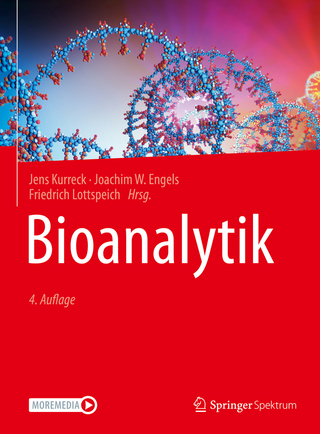
Entomopathogenic Fungi
Springer Singapore (Verlag)
978-981-97-5990-3 (ISBN)
- Titel nicht im Sortiment
- Artikel merken
This book brings together the molecular aspects of the pathogenesis of entomopathogenic fungi, various aspects of mycoinsecticide development, and regulatory aspects to highlight the immense contribution of the agricultural sector. The chapters address aspects of entomopathogenic fungi, including host-pathogen interactions (susceptibility and resistance), fungus-insect and fungus-fungus dual interactions, phylogeny and taxonomy, biochemistry, and molecular basis of enteropathogenesis, market potential of entomopathogens, regulatory aspects, bioprospecting of fungi, fungi as crop bodyguards and in disease suppression, and consortia for the control of insect pests and pathogens in single crop systems. Written by experts in academia and industry from Algeria, Brazil, Hungary, India, Italy, Malaysia, Oman, Pakistan, and the United States, the book overviews entomopathogenic fungi used as biological control agents against insect pests and other arthropods, their mode of action, pathogenesis, bioactive metabolites, mycotoxins involved, their mass production, limitations, and agricultural- and environment-related issues. It also includes developing various biopesticide products, with special references to formulations and prospects.
In agriculture, crop protection and production depend on insect pests controlled by entomopathogenic fungi. Understanding the pathogenicity, mechanism of action, formulations, and applications of a wide array of entomopathogenic fungi as biopesticides is a valid eco-friendly approach. The book provides advances in pathogenicity, biochemistry, virulence, and interaction that facilitate the application of Beauveria, Metarhizium, and other entomopathogens as potential biopesticides against major insect pests. Developments in bioactive compounds, secondary metabolites, enzymes, and toxins of entomopathogenic fungi have facilitated precise applications and management to target insect pests. Further advances in molecular aspects, the formulation of nanobiopesticides, and biofabricated technology paved the way for insect pest control. This book will be a helpful resource for students, teachers, researchers, scientists, and professionals in the industry working on biological sciences, applied entomology, mycology, zoology, forestry, biochemistry, molecular biology, and nanotechnology.
Sunil Kumar Deshmukh
Dr. Sunil Kumar Deshmukh is a Scientific Advisor to Greenvention Biotech, Uruli-Kanchan, Pune, India, and Agpharm Bioinnovations LLP, Patiala, Punjab, India. Veteran industrial mycologist spent a substantial part of his career in drug discovery at Hoechst Marion Roussel Limited [now Sanofi India Ltd.], Mumbai, and Piramal Enterprises Limited, Mumbai. He has also served TERI-Deaken Nano Biotechnology Centre, TERI, New Delhi, and as an Adjunct Associate Professor at Deakin University, Australia. He has to his credit 8 patents, 152 publications, and 23 books on various aspects of fungi and natural products of microbial origin. He is a president of the Association of Fungal Biologists (AFB) and a past president of the Mycological Society of India (MSI). He is a fellow of the Mycological Society of India, the Association of Biotechnology and Pharmacy, the Society for Applied Biotechnology, and the Maharashtra Academy of Science.
Kandikere Ramaiah Sridhar (150 words)
Dr. Kandikere R. Sridhar is an adjunct professor in the Department of Biosciences, Mangalore University, India. His main areas of research are 'Diversity and Ecology of Fungi of the Western Ghats, Mangroves, and Marine Habitats'. He was an NSERC postdoctoral fellow and visiting professor at Mount Allison University, Canada; the Helmholtz Centre for Environmental Research at UFZ and Martin Luther University, Germany; and the Centre of Biology, University of Minho, Portugal. He was a recipient of the Shome Memorial Award (2004), Vice President (2013), President (2018), and Lifetime Achievement Awardee (2019) by the Mycological Society of India. He was a recipient of the Fellowship of the Indian Mycological Society, Kolkata (2014), Distinguished Asian Mycologist (2015), and Outstanding Leader in Education and Research, Association of Agricultural Technology of Southeast Asia (2016). According to a Stanford University survey, he is one of the top 2% of scientists in the field of mycology.
Chapter 1. Entomopathogenic fungi in leaf litter.- Chapter 2. Endophytic insect-pathogenic fungi.- Chapter 3. Biochemistry, pathogenisis and parasitism of Beauveria.- Chapter 4. Metarhizium - Biochemistry of pathogenisis and parasitism.- Chapter 5. Trichoderma as an entomopathogen - paradigm changes.- Chapter 6. Unveiling the insect-fungal interaction of Metarhizium anisopliae: a potential entomopathogenic fungus in controlling pest infestations in the tea industry.- Chapter 7. Molecular basis of entomopathogenesis and parasitism.- Chapter 8. Fungal metabolites useful in agriculture and healthcare.- Chapter 9. Prospects and applications of bioactive compounds from fungal entomopathogens.- Chapter 10. Potential and characteristics of biological control of insects.- Chapter 11. Biocontrol potential and specificity of entomopathogenic fungi.- Chapter 12. Vector control potential of entomopathogenic fungi.- Chapter 13. Interaction of Metarhizium anisopliae against Emergent Insect-Pest Problems in North-Eastern Tea Industry.- Chapter 14. Paecilomyces: An Ecofriendly Approach to Control Agricultural Pests and Pathogens.- Chapter 15. The Role of Entomopathogenic Fungal Metabolites in Pest Management.- Chapter 16. Metabolites, Enzymes and Toxins in Entomopathogenic Fungi.- Chapter 17. Entomopathogenic Fungal Metabolites Useful in Agriculture and Healthcare.- Chapter 18. Applications of Bioactive Compounds from Fungal Entomopathogens.- Chapter 19. Molecular Basis of Entomopathogenesis and the Way Forward.- Chapter 20. The Framework for Potential Entomopathogenic Fungal Nanobiopesticides.- Chapter 21. Insect Pest Control through Biofabricated Technology.
| Erscheint lt. Verlag | 16.12.2024 |
|---|---|
| Zusatzinfo | Approx. 500 p. 100 illus., 50 illus. in color. |
| Verlagsort | Singapore |
| Sprache | englisch |
| Maße | 155 x 235 mm |
| Themenwelt | Naturwissenschaften ► Biologie ► Mikrobiologie / Immunologie |
| Naturwissenschaften ► Biologie ► Mykologie | |
| Schlagworte | Biological Control • Dual interactions • Enzymology • fungal biology • Fungal entomopathogen • Fungus-insect • Host-pathogen interaction • Insect-pathogenic species • insect pests • Mycopesticide • Pest management |
| ISBN-10 | 981-97-5990-0 / 9819759900 |
| ISBN-13 | 978-981-97-5990-3 / 9789819759903 |
| Zustand | Neuware |
| Haben Sie eine Frage zum Produkt? |
aus dem Bereich


